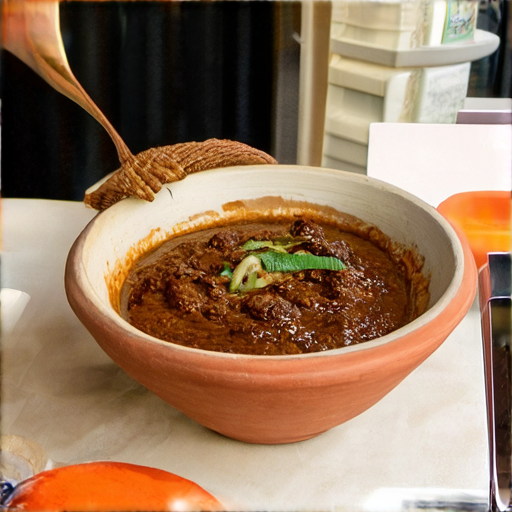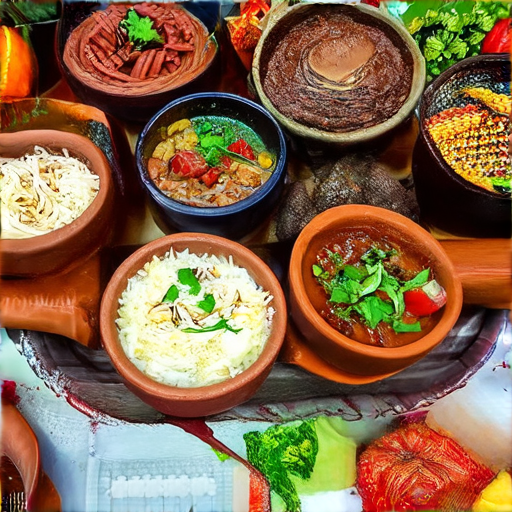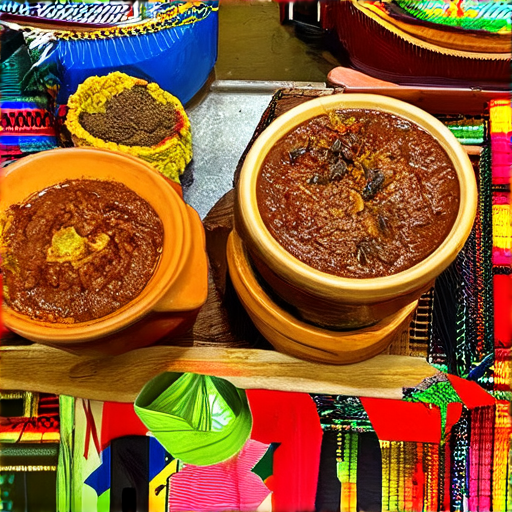Mole sauce, a cornerstone of Mexican cuisine, has long been celebrated for its rich complexity and versatility. Whether drizzled over tender meats, nestled into hearty stews, or swirled into vibrant rice dishes, mole sauce adds a layer of depth that transforms ordinary meals into extraordinary ones. For those looking to elevate their culinary skills, the art of crafting creative mole recipes offers endless possibilities, allowing chefs and home cooks alike to explore the vibrant flavors of Mexico.

What is the Most Popular Thing to Add to Mole?
Mole, a rich and complex sauce used in Mexican cuisine, often includes a variety of ingredients to enhance its flavor and texture. Among the most popular additions to mole are nuts and seeds, which contribute a creamy and earthy taste. Here are some of the key components commonly added:
- Nuts: Peanuts, cashews, and almonds are frequently incorporated into mole recipes. They add a satisfying crunch and nutty flavor.
- Seeds: Sesame seeds are a common addition, contributing a subtle sweetness and a creamy texture.
- Bread Products: Toasted bread, crackers, and tortillas are often used to thicken the mole and add depth.
- Other Ingredients: Some recipes include chocolate, cocoa powder, or even plantains for a sweeter, earthier taste.
Nuts and seeds are particularly popular because they add a satisfying texture and richness to the dish. However, the specific ingredients can vary depending on the region and the chef’s preferences. For example, some recipes might include peanut butter for extra creaminess, while others might opt for chipotle peppers for a spicy kick.If you’re looking for a traditional mole recipe, Panito Moleoffers a variety of authentic options that showcase the versatility of this beloved ingredient. Their recipes are perfect for both beginners and experienced cooks looking to master the art of making mole.Additionally, competitors like Mole Mamaand La Morenaprovide alternative takes on classic mole recipes, offering twists that cater to different tastes. Whether you prefer your mole spicy, sweet, or savory, there’s a recipe out there to suit your preferences.
The Most Famous Mole
Mole Poblano is widely regarded as one of the most iconic and recognizable types of moles in Mexican cuisine. Originating from the city of Puebla, this rich, complex sauce is a cornerstone of Mexican gastronomy. Mole Poblano typically features a blend of around 20 ingredients, including various chile peppers (often featuring the mulato variety), nuts, spices, sugar, and chocolate, creating a harmonious balance of flavors.While there are many variations of mole across Mexico, Mole Poblano stands out for its versatility and widespread popularity. It is often served with dishes like chicken, pork, or turkey, making it a staple in both home kitchens and high-end restaurants.If you’re looking to explore Mole Poblano further, we recommend trying our Mole Poblano Recipefor a taste of this legendary dish. Additionally, check out our comprehensive guide to Mole Recipesto discover the many ways this beloved sauce can be prepared and enjoyed.
Other Notable Types of Mole
While Mole Poblano is the most famous, there are several other notable varieties worth exploring:1. Mole Negro (Oaxacan Black Mole)– Hailing from Oaxaca, this mole is known for its deep, earthy flavor. It typically includes black beans, chocolate, and a variety of spices, making it a favorite in Oaxacan cuisine. 2. Mole Rojo (Guerrero Style Red Mole)– Originating from Guerrero, this spicy version of mole is characterized by its vibrant red color and intense chile flavor. It pairs exceptionally well with chicken and pork dishes.Each type of mole offers a unique flavor profile, allowing chefs and home cooks alike to experiment with different textures and tastes. Whether you’re a fan of the smoky complexity of Mole Poblano or the bold heat of Mole Rojo, there’s a mole to suit every palate.
What Makes a Good Mole?
A great mole is a complex blend of flavors that balance heat, sweetness, and umami, making it a versatile and aromatic sauce. Here’s what goes into crafting a perfect mole:
Key Ingredients
- Hot Chiles: Typically Anaheim, Guajillo, or Arbol peppers, which add heat and flavor.
- Dark Chocolate: Adds depth and richness, often in the form of unsweetened cocoa powder or bittersweet chocolate.
- Tomatillos: Tangy and slightly sweet, contributing a bright acidity to the sauce.
- Onions and Garlic: Sautéed to add sweetness and a smooth base note.
- Cumin, Cloves, and Thyme: Provide earthy and herbal notes.
- Sugar or Agave Nectar: Balances the heat and adds a subtle sweetness.
How It’s Made
- Sauté onions, garlic, and chiles until softened.
- Add tomatoes, tomatillos, and water, simmering until thickened.
- Mix in spices, chocolate, and sugar, then cook until the chocolate melts and the flavors meld.
- Blend or use a molcajete to ensure a smooth texture.
Why It Works
- Balance: Combines heat, sweetness, and acidity for a well-rounded taste.
- Complexity: Layers of flavors from various ingredients create depth.
- Culinary Versatility: Pairs well with meats, poultry, fish, and grains.
Tips for Success
- Adjust spice levels by varying the chili variety and quantity.
- Use a high-quality dark chocolate for better flavor.
- Simmer gently to allow the flavors to develop fully.
- Serve warm over dishes like enchiladas, tlayudas, or grilled meats.
For the best mole recipe, visit our authentic mole sauce guide for step-by-step instructions and expert tips.

What Ingredient Is Added Into Moles?
Moles, a rich and complex sauce commonly used in Mexican cuisine, typically consist of several key ingredients. At the core of most mole recipes are **onions** and **garlic**, which provide a sturdy foundation for the dish. These are often sautéed until they become caramelized, adding depth and sweetness to the sauce.In addition to onions and garlic, **chocolate** is a hallmark ingredient in authentic Mexican moles. Dark chocolate, whether in the form of unsweetened cocoa powder or melted chocolate, adds a velvety texture and subtle bitterness that complements the other flavors beautifully. Some recipes also incorporate **nuts** or **seeds** to thicken the sauce and enhance its richness.Other common additions include **cumin**, **cinnamon**, **cloves**, and **allspice**, which contribute aromatic and warm notes. Herbs like **Mexican oregano** or **hoja santa** (a type of leafy green) are also frequently used to add complexity. For a smokier flavor, **ancho chile peppers** or **pasilla peppers** may be included.While these ingredients form the backbone of most mole recipes, there are countless variations depending on regional preferences and availability. Some recipes might incorporate **fruits**, **vegetables**, or even **肉 (meat)** for added layers of flavor.For the best results, we recommend exploring the variety of mole recipes available on our website, where you can find everything you need to create authentic and delicious moles. Check out our collection of mole recipes and learn how to make this iconic dish: [Panito Mole](https://panito-mole.com/).
Key Ingredient in Mole
The primary ingredient added to mole is chocolate, particularly in the traditional Oaxacan version known as “mole negro” (black mole). Chocolate is essential for its deep, rich flavor, enhancing the complexity of the sauce. Other key components include green chilies, tomatoes, onions, garlic, and a blend of spices like cumin, coriander, and oregano. These ingredients work together to create a flavorful and aromatic base for dishes like turkey, chicken, or pork.
What is the Aztec Special Ingredient Added to Mole?
The Aztec special ingredient in mole is **xocolatl**, an ancient beverage made from cacao beans, water, and various spices. Xocolatl translates to “bitter water” in Nahuatl, the language of the Aztec people. Unlike modern chocolate, xocolatl was not sweetened and was often consumed as a drink during ceremonial occasions.### History of XocolatlThe Aztecs revered xocolatl, viewing it as a gift from the gods. They harvested cacao beans, which were then ground into a paste and mixed with water and spices like chili peppers, vanilla, and honey (since they didn’t have sugar). This drink was used in rituals and ceremonies, particularly associated with fertility and divine communication.### Evolution of Mole with Spanish InfluenceWhen the Spanish conquistadors arrived in Mexico, they introduced new ingredients to the Aztec diet, including sugar, wheat, and European spices like cinnamon and nutmeg. These additions transformed xocolatl into a sweeter, more complex flavor. The Spaniards also introduced meat to the Aztec diet, which became a staple in mole dishes.### Modern Interpretation of Xocolatl in MoleToday, xocolatl remains a key component in mole, though it’s often blended with other ingredients like tomatoes, chili peppers, and squash. Modern chefs experiment with variations, adding unique twists while staying true to traditional flavors. For example, some recipes incorporate dark chocolate as a modern twist on xocolatl.### Tips for Making Mole Today- **Base Ingredients**: Start with a mixture of xocolatl, tomatoes, onions, garlic, and chili peppers.- **Spices**: Add a blend of cinnamon, cloves, and cumin for depth.- **Meat or Vegetables**: Include chicken, pork, or vegetables like squash for texture and flavor.- **Heat Level**: Adjust the spiciness by varying the type and quantity of chili peppers.### ConclusionXocolatl, the Aztec bitter water, lies at the heart of mole, evolving over centuries into a rich, complex dish that blends pre-Columbian traditions with Spanish influences. Its legacy continues to inspire chefs worldwide, creating a vibrant tapestry of flavors that honor its sacred origins.


0 Comments